Your Guide to Better Hearing with Hearing Aids and Solutions
Hearing aids are key in improving the quality of life for individuals with hearing loss by enhancing communication and social interactions. We offer personalized hearing solutions with expert care and advanced technology to support each patient’s unique needs on their journey to better hearing. Patients diagnosed with hearing loss can consult with us to be fitted with hearing aids, tinnitus solutions, or specialize hearing aids such as CROS or BiCROS hearing solutions.
Types of Hearing Aids
Hearing aids come in various styles to suit different levels of hearing loss and personal preferences. Here are the styles of hearing aids available:
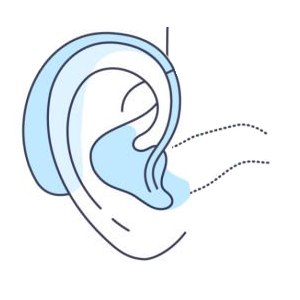
Behind-the-ear (BTE) Hearing Aids
BTE hearing aids sit behind the ear and are connected to an earmold or earpiece. They provide powerful amplification, are suitable for all levels of hearing loss, and are easy to maintain.
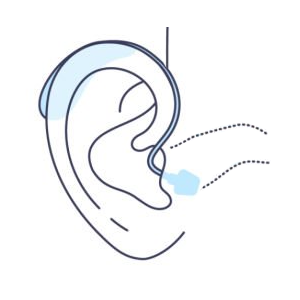
Receiver-in-Canal (RIC) or Receiver-in-the-Ear (RITE) Hearing Aids
RIC or RITE hearing aids, similar to BTE models, place the receiver in the ear canal for a natural sound. They are lightweight, discreet, and comfortable for all-day wear.
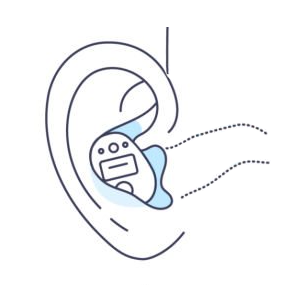
In-the-Ear (ITE) Hearing Aids
ITE hearing aids fit entirely in the outer ear, offering a custom mold for comfort and easier handling. They're perfect for those with mild to severe hearing loss.
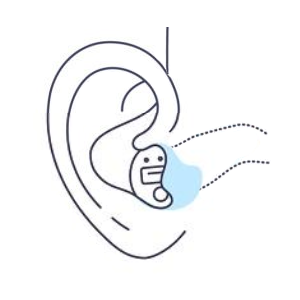
In-the-Canal (ITC) Hearing Aids
ITC hearing aids sit partially in the ear canal, offering a discreet fit. They balance ease of use with sound amplification and features like directional microphones.
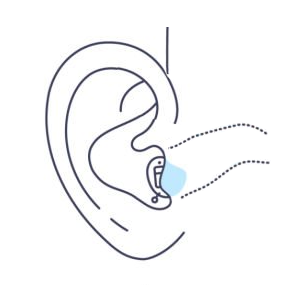
Completely-in-Canal (CIC) Hearing Aids
CIC hearing aids fit deep in the ear canal, offering discretion for mild to moderate hearing loss. Their small size makes them nearly invisible, but handling them requires good dexterity.
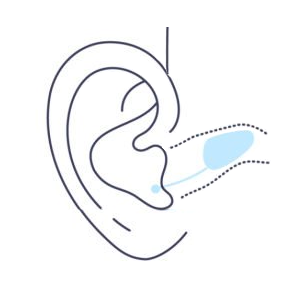
Invisible-in-Canal (IIC) Hearing Aids
IIC hearing aids are the smallest, sitting deep in the ear canal for near invisibility. They’re ideal for those with mild to moderate hearing loss who value discretion.
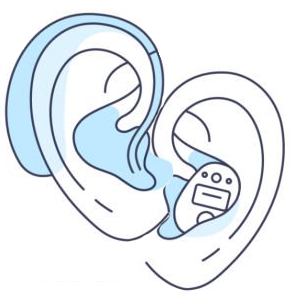
CROS Hearing Aids
CROS hearing aids assist individuals with one-sided hearing loss by transmitting sound from the weaker ear to the stronger ear, improving overall hearing and spatial awareness.
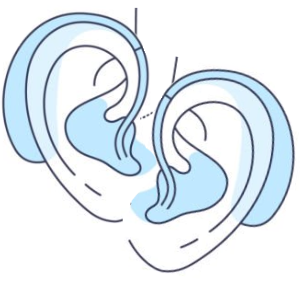
BiCROS Hearing Aids
BiCROS hearing aids are for people with hearing loss in both ears, where one ear is more impaired. They transmit amplified sound to the better ear, enhancing clarity.
Cutting-Edge Features for Modern Hearing Aids
Noise Reduction and Directional Microphones
Modern hearing aids use directional microphones to filter background noise, focusing on speech. This helps users hear more clearly in noisy environments like restaurants or meetings.
Smartphone Connectivity and App Controls
Hearing aids with Bluetooth connectivity allow users to adjust volume, change settings, and stream phone calls, offering increased control and customization for daily use.
Tinnitus Management Solutions
Hearing aids may have tinnitus relief features like notch therapy and sound masking, offering comfort by reducing the perception of ringing in the ears for tinnitus sufferers.
Tailored to Your Hearing Needs
The right hearing aid is selected through a thorough evaluation and fitting process, ensuring the best possible hearing experience for each patient.
Support Every Step of the Way
Hearing aid care extends beyond the initial fitting. Ongoing support and maintenance help patients get the most out of their devices.
Routine Checkups
Regular appointments ensure hearing aids work properly. Adjustments enhance sound quality and functionality, helping patients adapt to their devices more easily.
Repairs and Adjustments
If a hearing aid malfunctions, professional repairs may be necessary. Prompt service quickly fixes issues like battery problems, tubing replacements, or sound distortion.
Guidance on Cleaning and Care
Proper maintenance extends the hearing aid's lifespan. Patients are taught cleaning techniques, battery care, and safe storage to keep devices in top condition for years.





